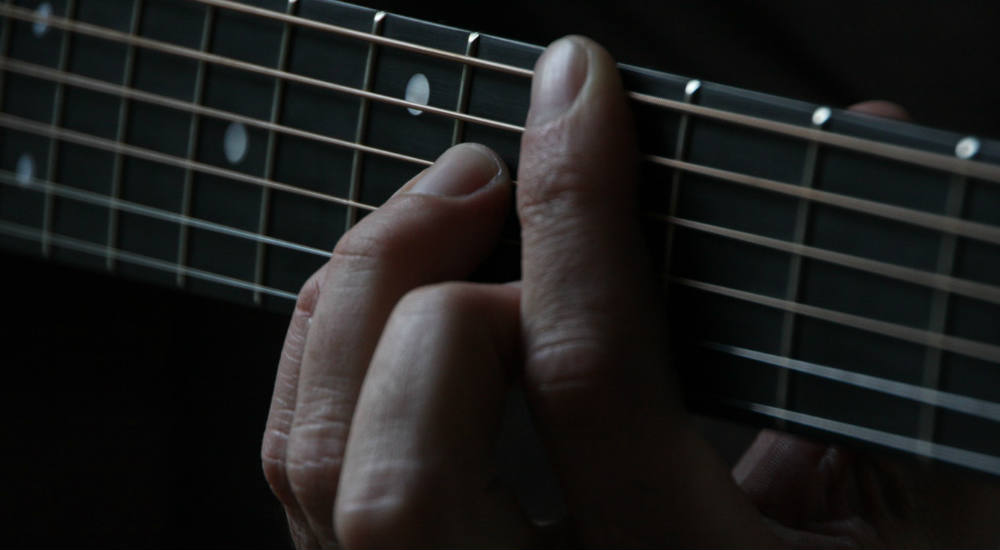
Remember from previous issues that making triads with A natural minor creates – Am Bdim C Dm Em F G7. Let’s now do the same with A melodic minor (Figure B) and see what we come up with – Am Bm Caug D E F#dim G#dim. You might be surprised to see an augmented chord and two diminished chords (as well as D and E Major).

What does this mean though? A lot of things, really. You can apply this to composition, theory, improvising and more. As a starting point for our chords it means we can use some of the above shapes wherever we want to use A melodic minor. Where do we use A melodic minor? Often we can play melodic minor shapes over the five chord—in this case E (or E7 to add some extra interest). So creating a standard chord progression (blues/jazz/funk/pop/Latin) of Am to E7 (Figure C) we can then play any of the above chords as substitutions for E7.

After trying any of these triads in place of E7 you might prefer some over others. This is normal and some of the chords possibly sound like they don’t fit. In that case perhaps try playing them with an E bass note (open E on the top string is a handy one to use). It creates a bit more of a reference point towards the ‘E’ sound and hopefully helps you hear the changes in sound. C aug, F#dim and G#dim work particularly well, adding tension that then sounds great when it’s resolved (Figure D).

Next try moving these chords around the neck. There are tons of voicings, I’m sure at least some of them you won’t have used or discovered before. Start slow with just one key/scale/mode and then try applying it like we’ve just done. Make your plan for the week to try and incorporate some of the A melodic minor chords as E7 chords to really solidify your knowledge and stretch your ear. Then move on to other keys/modes and you’ll start to discover more uses for them too. More next month!
Image via Scott Gruber.







